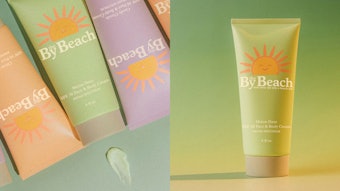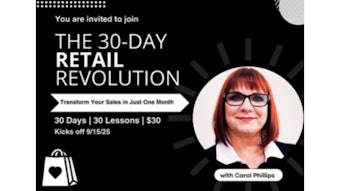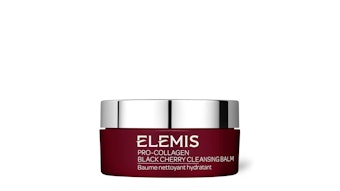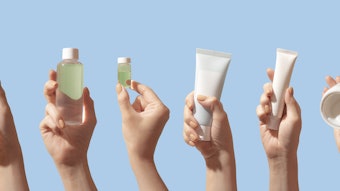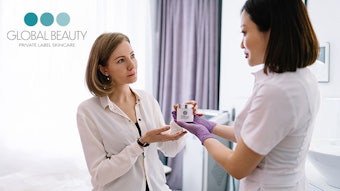In the July 2006 issue of Skin Inc. magazine, the first part of this article addressed how to initially identify a vendor that is compatible with your spa, as well as how to delve deeper in order to ask the pertinent questions needed to form a successful partnership. This part of the article goes into more detail and covers the various support programs and return policies, as well as logistics and payment options that exist in the realm of spa suppliers.
Support programs
Many vendors offer special programs for their accounts. These are beneficial for business growth and offer valuable incentives. Discuss with each vendor the specifics about the programs they offer—each will have their own set of guidelines.
Premier status. When you reach a certain level of sales—which may be based on monthly, quarterly or yearly sales—you receive additional perks. Typically, the more you order from the supplier, the grander the award dollars. They can be for free merchandise, testers, co-op advertising or deluxe samples.
Ask your sales consultant to provide a general idea of where your business stands in comparison to others. This will supply you with perspective and possible leveraging power. It also will present a realistic idea of how your retail skills compare. This can be a serious conversation or a pat-on-the-back moment.
Gratis. Gratis is the practice of receiving a retail product at no charge. There are copious ways of using gratis. It can be given to the employees so that they can experience products in order to represent them by personal recommendations. It also can be used as a contest incentive, a client thank-you, a donation or just for you.
Gift with purchase (GWP). One of the first things that goes through a woman’s mind when she hears about GWPs is department store brands giving away free lipsticks or cosmetic bags laced with brand marketing. This is a brilliant idea—everybody loves to get a present. That marketing technique still works, and is a great incentive for both the business and the client. The client will extend their budget to hit the target amount needed in order to obtain the GWP, and the GWP provides a product to sample and then fall in love with.
Some vendors offer programs to assist you with contributing the GWP. It should be associated with a special event or be available only for a specific duration. It never should extend during a long period of time, or the excitement will be lost. A “while supplies last” type of promotion usually works very well.
The GWP can be set up in numerous ways, but the gift must have some value and relate to the items purchased. It can be used to offer your clients a little perk and to weed through excess inventory. In both instances, the client will enjoy the gift, and sales will increase.
Cooperative advertising. This offers marketing support for a specific product line and is processed in different ways, depending on the supplier. The majority of them designate an allotted dollar amount to go toward co-op advertising. The vendor often will provide a support Web site or a CD that can be used for all marketing needs. The spa owner creates an advertisement and sends it to the supplier for approval because it needs to represent the brand properly. Once the ad is approved, it may be placed. The product company will credit the spa’s account for the percentage they are reimbursing, which can be used for future purchases.
Sampling. Each vendor has a different policy on sample allotment. The majority base it on sales volume. A percentage of this amount goes toward marketing, which includes samples. Many will allow sampling on their top-selling items, while others will sample all retail products.
If a client is reluctant to purchase a product, or you would like to add another item to their home-care routine, then a sample should be positioned. They also can be used to promote new merchandise. For all the previously stated reasons, samples are very well utilized. Treat them as though they are worth their weight in gold, and the client will feel the same way. If they are given away all the time, however, a client never will need to purchase them. If a sample is provided, make a note of it in your records, and follow up as if it were a product. Clients should understand that a sample provides a small representation of what a product actually can do. Minimal or no results will be obtained from a sample because, at most, it lasts for only a couple of days. The client’s experience with it is limited to evaluating the consistency, texture, scent and any negative reactions that may occur.
This is a fast-paced, busy world. If a client really needs a product, then a sample just won’t suffice. Once it is gone, the person has to make an extra trip to purchase the item. This is why many clients buy skin care products from department stores—because of the convenience. Make it as easy as possible for them to obtain products from you—samples are not necessarily the best way to do it.
The other reason why samples are used frequently is because you aren’t sure whether a client can afford the product but you know that they really need it, so you offer a sample. You believe that it’s your right to decide if the client should purchase the product or not. Well, who put you in charge of your clients’ finances? It is their decision what they can purchase, not yours. That needs to be focused on, because too many professionals in the skin care industry—due to the fact that, as a group, they are giving people by nature—want to give product away too often. Put an end to prejudging clients’ spending capabilities right now. Say goodbye, bury it—end of story.
Samples potentially can cannibalize your retail business. Keep a record of the amount distributed that leads directly to products being purchased. These statistics can reveal whether samples are beneficial and increase retail sales, or whether they sabotage them. Position samples to be a small value in supporting your clients’ ultimate skin care goals.
Return policy
Review a supplier’s return policy prior to opening an account. If you don’t obtain this information, it could become a problem at a later date. Usually in the spa industry, companies will back their products if a client has an adverse reaction to it or if it is damaged.
The majority of companies will not accept returns on expired or overstocked products. Oftentimes, there is a restocking fee—typically 25%—although some vendors will accept all returns. Some may require an order to be placed in excess of the amount of the return. So, for example, if you return $100 worth of merchandise, you will need to place an order for $200.
Logistics
When interest in a supplier has developed into a relationship, an account will have to be created. The strength of the products will determine what is required to do this.
Following are possible items that the vendor may require before an order can be placed.
- Terms of the sales agreement
- Tax ID
- Proof or a copy of liability insurance
- A copy of a professional license
- A copy of a medical license
Specific requirements
Certain companies have solid philosophies, and these beliefs must be supported throughout all the establishments that carry their products. The vendor wants to control how the products are portrayed. In these cases, the facility must meet specific qualifications. For example, the spa may need to be a particular type of establishment, to have an affiliated physician or one on staff, to employ a certain number of estheticians or to meet specific treatment room guidelines.
Payment
Find out what forms of payment the supplier accepts. The majority of companies will accept all major credit cards, as well as checks.
Placing orders
Discover how orders are to be placed—through the sales consultant or the call center. Do orders need to be called in, or can they be faxed or e-mailed? Find out the turnaround time from the moment the company receives an order to the point when the package is shipped. Vendors have a cutoff time limit for orders that will be sent out the day of purchase—if you miss this, your items usually are shipped the following business day. The carrier’s last pickup of the day will determine the cutoff time. Initial orders may take slightly longer to place. Because reorders are standard and straightforward, they can be completed within a shorter time frame.

